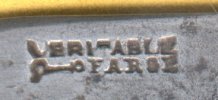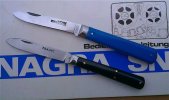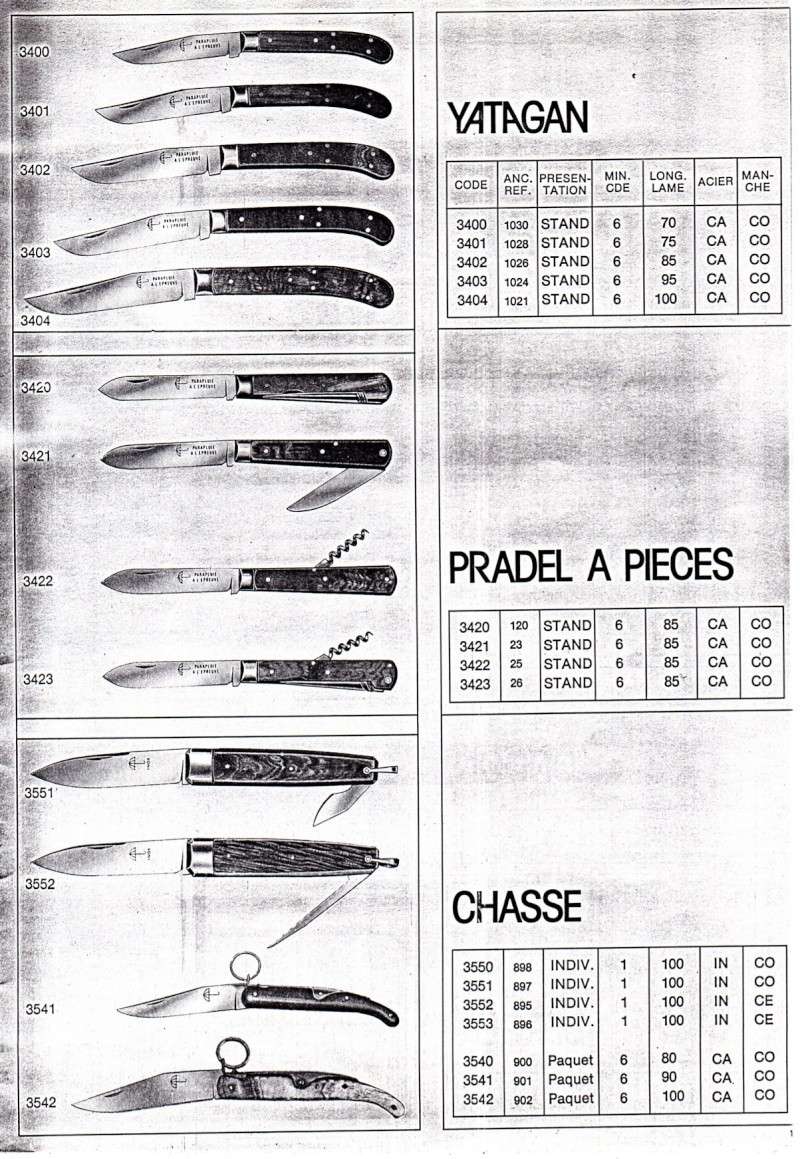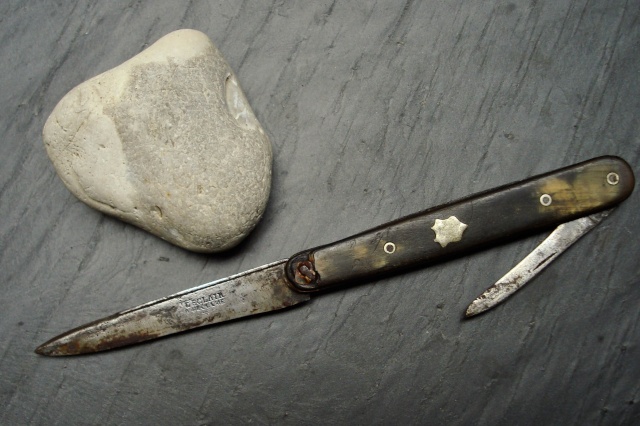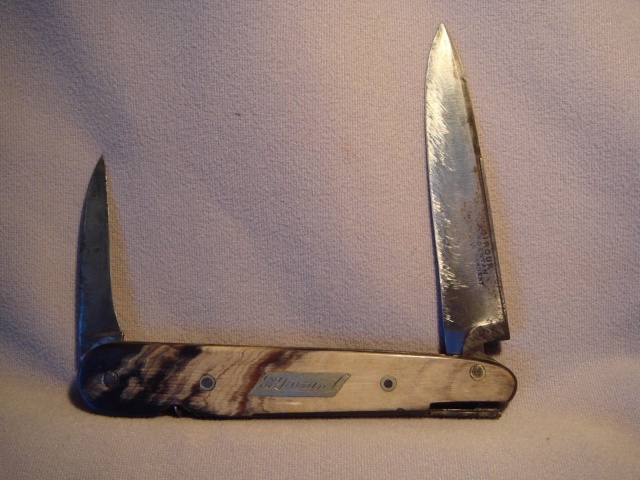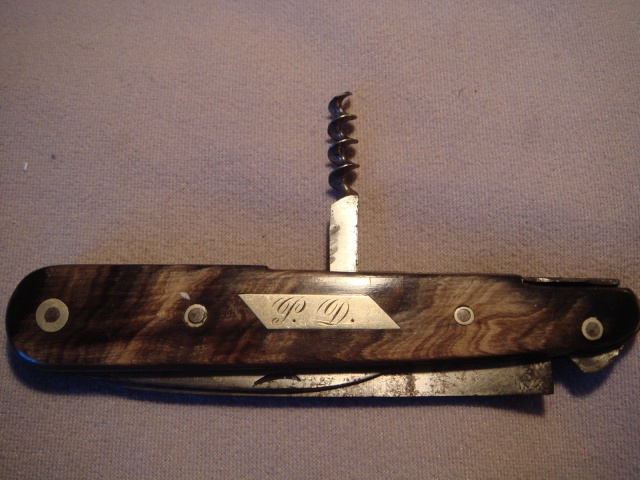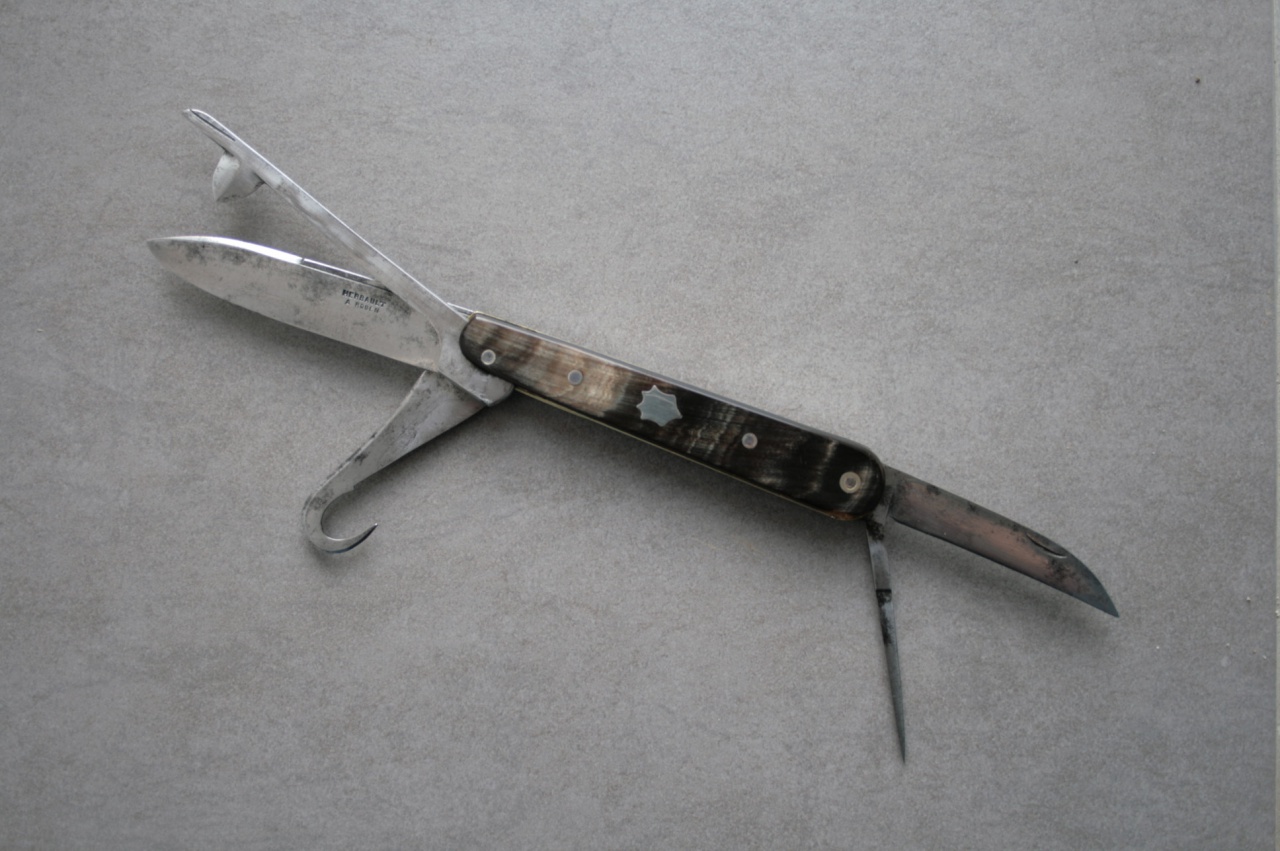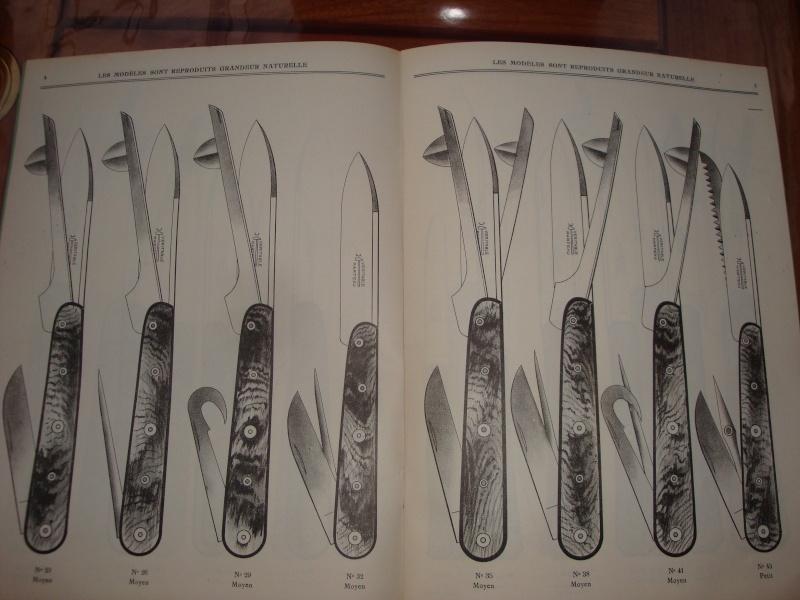Here is an old French knife which could be overlooked in a group setting, but that would be a mistake...
This Veritable Farge takes the form of a classic single blade jack pattern, but has many subtle details that get lost in its straight forward appearance.
With a handle size of just over 4 inches, it is a healthy sized folder. The two-tone bias cut horn handles have nice appeal, and a few extra brass handle pins add more detail.
But the blade and bolsters are something more to study. The blade is a standard flat spear-point with a half moon nail pull, but what some would call a second long nail pull, runs the length of the blade from the regular pull through the tang. The makers stamp is strong and sits lengthwise with the blade which is another nice feature. The blade also has flush joints in both the half stop and closed position which is a wonderful detail that goes unnoticed by many. Finally, the bolster are not only curved and pinched types, but they are also angle cut to fit into the horn handles in a slant form. Another feature which few knives have.
I believe this Veritable Farge French folder dates to the 1920s - 1930s era, and a comparable model is shown from a 1926 French cutlery catalog.
Aside from the knife and catalog illustration, is a picture showing the flush blade joint in the closed position.
View attachment 1291754
View attachment 1291764
View attachment 1291765


 Fine array! (I have a soft spot for the horn)
Fine array! (I have a soft spot for the horn)




